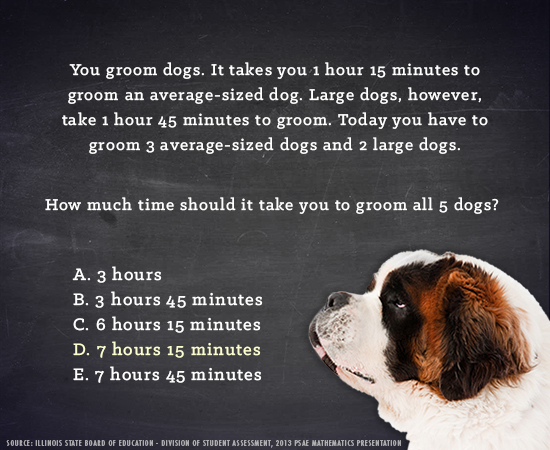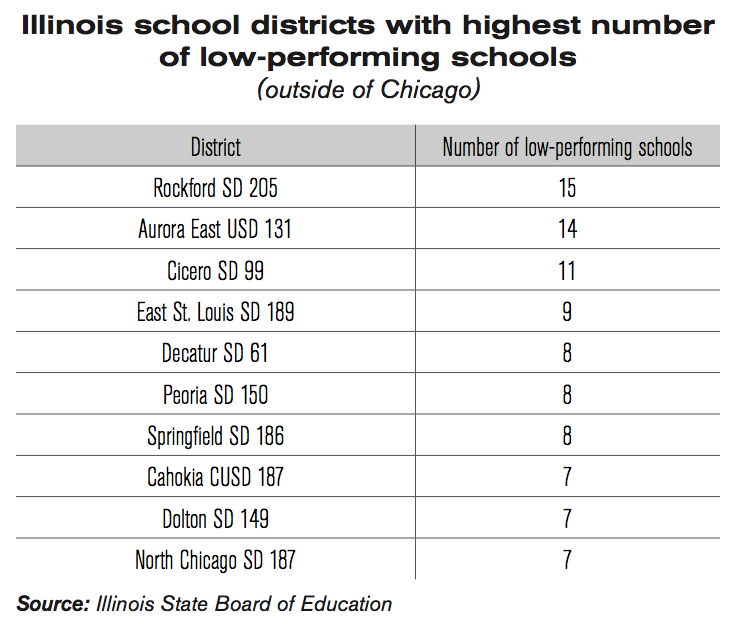Trapped in Illinois’ lowest-performing schools
Can you solve the following math problem? Ninety-two percent of students in Illinois’ lowest-performing high schools struggle to solve problems like this one. Low-performing schools aren’t a Chicago-only phenomenon – the city is home to only 45% of the state’s lowest-performing elementary schools and high schools. More than half of the state’s lowest-performing schools are outside of...
Can you solve the following math problem?
Ninety-two percent of students in Illinois’ lowest-performing high schools struggle to solve problems like this one.
Low-performing schools aren’t a Chicago-only phenomenon – the city is home to only 45% of the state’s lowest-performing elementary schools and high schools.
More than half of the state’s lowest-performing schools are outside of the city’s borders.
These schools are struggling at their most basic task: teaching students the knowledge and skills they need to succeed in the future.
A look at their academic performance data illustrates as much:
- 72% of students at Illinois’ lowest-performing elementary schools failed to meet standards in math, with 53% one grade level behind, and 19% two or more grade levels behind. Eighth-grade students who are one grade level behind in math have difficulty solving one-step equations that involve addition, subtraction, multiplication and division, while those who are two or more grade levels behind cannot solve fraction problems even when they have common denominators.
- 72% of third-graders at Illinois’ lowest-performing elementary schools failed to meet standards in reading. Third-grade students who are behind in reading are unable to distinguish between the main idea and supporting details of a story. They are also four times as likely as their peers to drop out of high school.
- Only 6% of students at Illinois’ lowest-performing high schools scored well enough on the ACT to be considered college-ready, meaning they have at least a 50% chance of getting a “B” or a 75% chance of a getting “C” in freshman college classes in reading, writing, math and science.Research shows that students who lack basic math and reading skills are more likely to drop out of high school, are incarcerated at higher rates, are more likely to enroll in public assistance programs and will make significantly less money than their peers who received a quality education.
These startling data are precisely the reason why a majority of families with students in Illinois’ lowest-performing districts want to use the money being spent on their loved one at a public school to pay tuition at a school of their choice.
That’s according to a recent We Ask America poll, commissioned by the Illinois Policy Institute, which surveyed the parents and relatives of students enrolled in public schools in six different low-performing school districts: City of Chicago School District 299, Aurora East Unified School District 131, East St. Louis School District 189, Rockford School District 150, Springfield School District 186 and Waukegan Community Unit School District 60.
The family members of students in these districts want the option to have their loved one attend a higher-quality school. They realize just how important a quality education is for their child’s future.
It’s time for legislators to give them that option – to ensure that students at Illinois’ lowest-performing elementary schools and high schools will receive an education that will make a difference in their lives.

